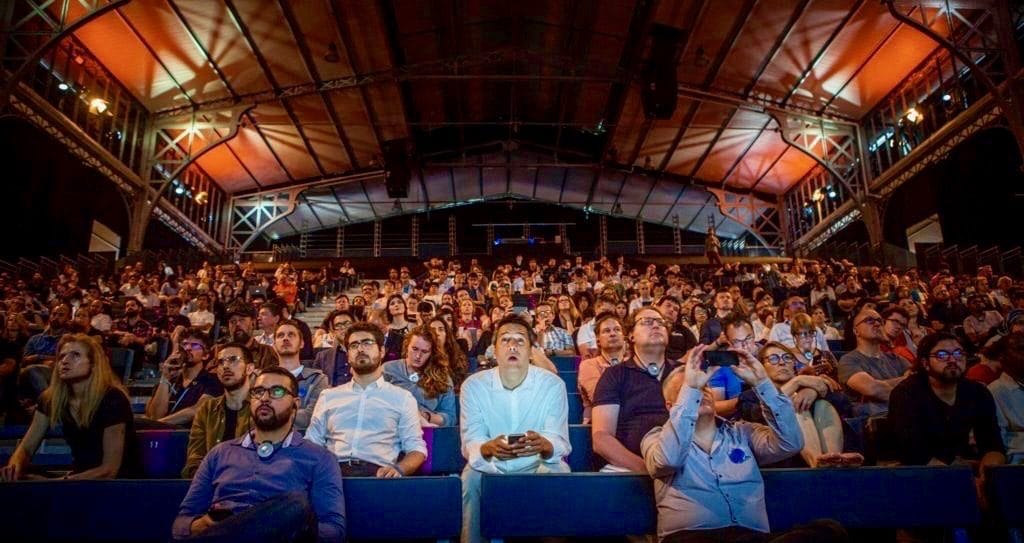Imagine if you could get a ‘city’ to agree to making the world more self-sufficient.
A creative team of pioneers and makers is doing exactly that. They’ve created a set of ten principles as a sort of instruction manual to build a more sustainable and inhabitable new world. And they’re getting cities to agree to it. In fact, 28 ‘cities of tomorrow’ are already on board, having signed up to the Fab City manifesto.

The revolution will be self-organised
Watch ► Press the button to grow and make almost anything…
This year another ten cities signed up to the initiative at the Fab City Summit. Every year the conference-lab-party brings together more than 1,000 do-ers, civic leaders, makers, urbanists, governments, industries and innovation ecosystems from all around the world with one thing in common – wanting to create a ‘DIY’ urban future that is as accessible, inclusive and open source as possible. At its heart? The circular economy.
An alternative regenerative system prioritising the longevity of goods by sharing or recycling – in contrast to the linear economy’s ‘take, make, dispose’ model of production.
One country with a love for initiatives that revolve around the économie circulaire is France. That’s why the opening event of the FAB14+ conference was hosted by the startup-loving Paris this year. Split into a tricolore of Lab, Conference and Campus, the summit transported us from the insanely oh là là Hôtel de Ville…

… to Europe’s largest science museum in the trippy park of creativity that is La Villette.
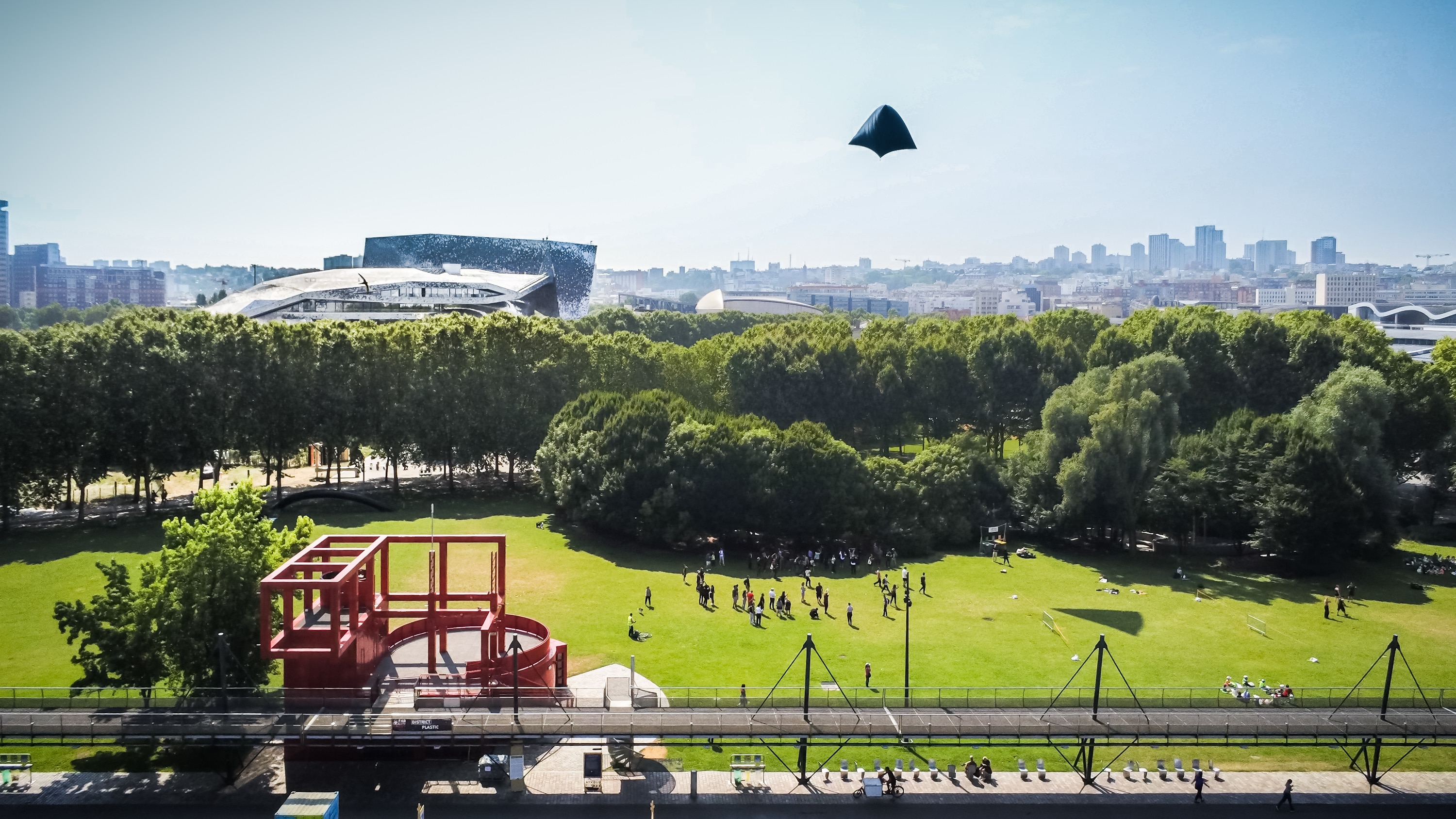
Letting off STEAM
In a crowd-pleasing coup d’état, the international community was welcomed to the City Hall by a Bastille Day fly-by of 64 jets and 30 helicopters – and as a finale, France only went and won the World Cup.
Here are 14+ fab things about the forward-thinking Fab City Summit. In the words of DIY-hungry renegade economist Kate Raworth: “I love it. I want to eat all of it!”
1. Major Mayor moves
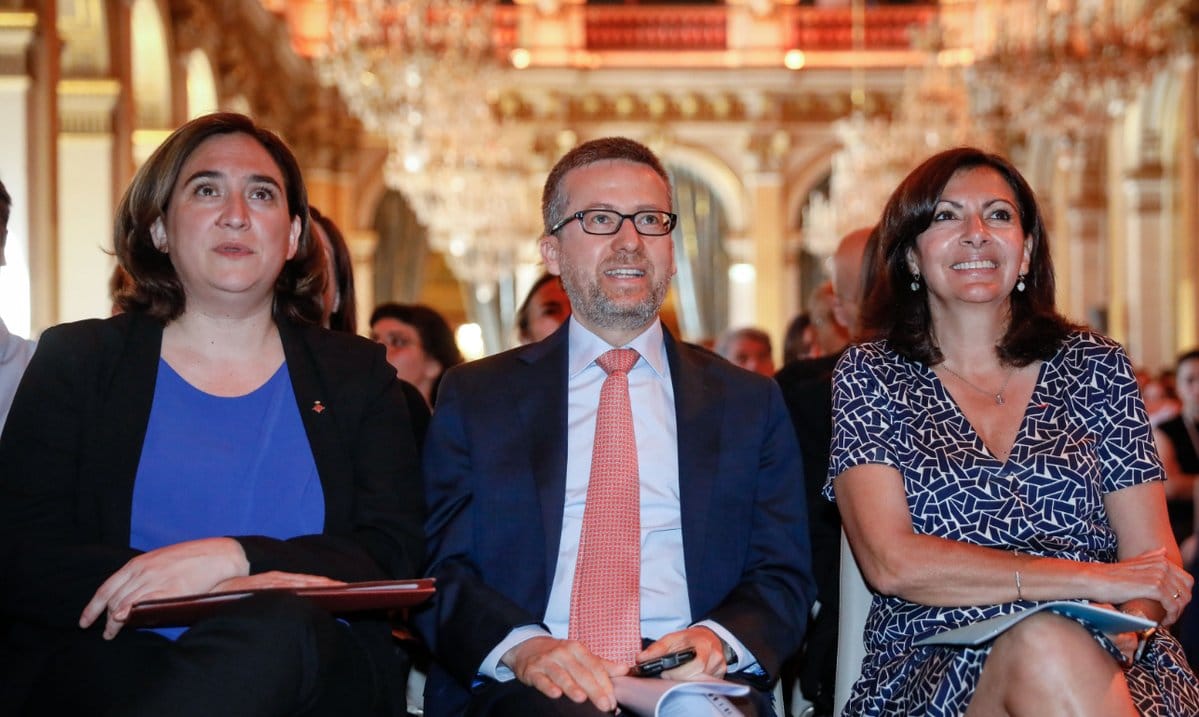
Ada Colau, Carlos Modeas and Anne Hidaglo
In times of political turmoil, the world’s urban centres should be sending the message that together we can improve lives. So it’s awesome when city leaders come together to take bold actions and show others the way.
As Barcelona and Paris share similar visions about urban innovation, their mayors – Barcelona’s Ada Colau and Paris’s Anne Hidalgo – kicked off the summit to a full house. Their plan: to create a future enabled by tech and led by women.
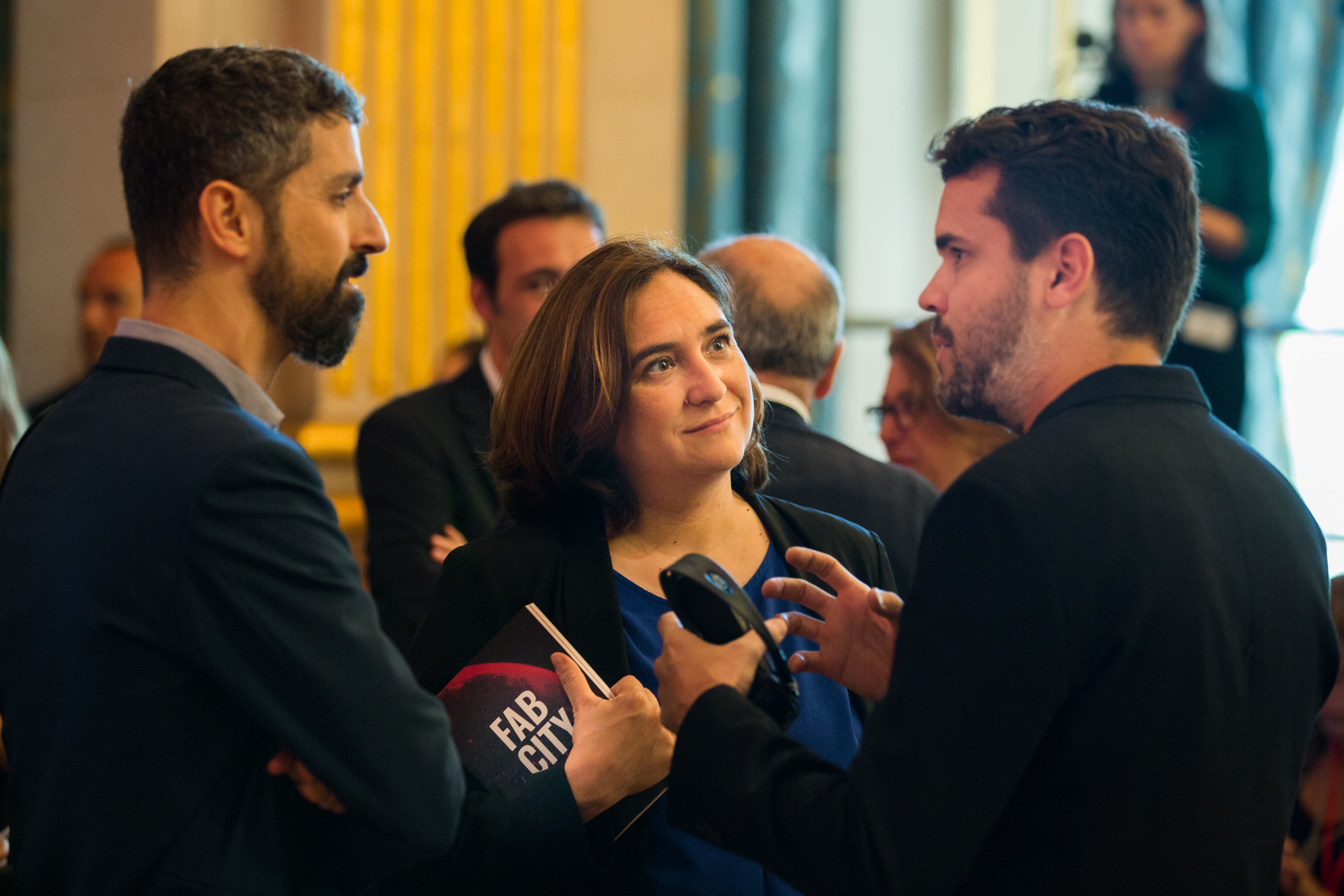
Hands-on do-ers, makers and mayors
► For more Fab projects sign up to AtlasNews
“Cities are spaces where we can create collectively. They are a natural space for innovation, an opportunity to rethink democracy with technology.” – Ada Colau, Mayor of Barcelona
2. Birth of the global city

What a rock star
Ever wondered where the term ‘global city’ was coined? Look no further than the doyenne of urban activism, Saskia Sassen, who opened the Summit’s main day of 25 speakers… and she came up with the term in 1991.
“The city matters because it’s one of the few places in today’s world where those without power get to make history, local economy and culture. The city today is both the centre of power and hope.” – the very multilingual Saskia Sassen
Defending the rights of citizens to create their own city, and comparing high finance to the steam engine, the Dutch-American sociologist stressed that the urban space is the key building block of economies. The polyglot speaks six languages and didn’t even realise she was speaking in French for the first half. Lucky her power is such that neither did those who don’t speak French.
3. Fab FutureHeroes

Dutch designer Dave Hakkens
Split into the three themes of ‘Reversible, Scaleable and Possible’, and a bunch of panels and workshops, the summit featured debates on global challenges such as technology, climate change and social inequality – with Neil Gershenfeld, ‘Doughnut Economics’ author Kate Raworth, José Luis de Vicente, curator of Sónar+D, Dave Hakkens, the designer behind Precious Plastic, fractal geometry-loving Ron Eglash, Barcelona City Council’s Francesca Bria, MIT’s spacey Danielle Wood and Indy Johar, architect and co-founder of (among other things) Wikihouse – and more.

Backstage: in the pines
► Learn more about Fab City Global and the DIY cities of tomorrow
“We should be really challenging people’s dreams. We have to infect the imagination of tomorrow and create pathways.” – Indy Johar

Everything Indy says deserves a mic drop
AtlasAction ► Watch all the talks here
4. Renegade economist is thrilled to ‘bits’
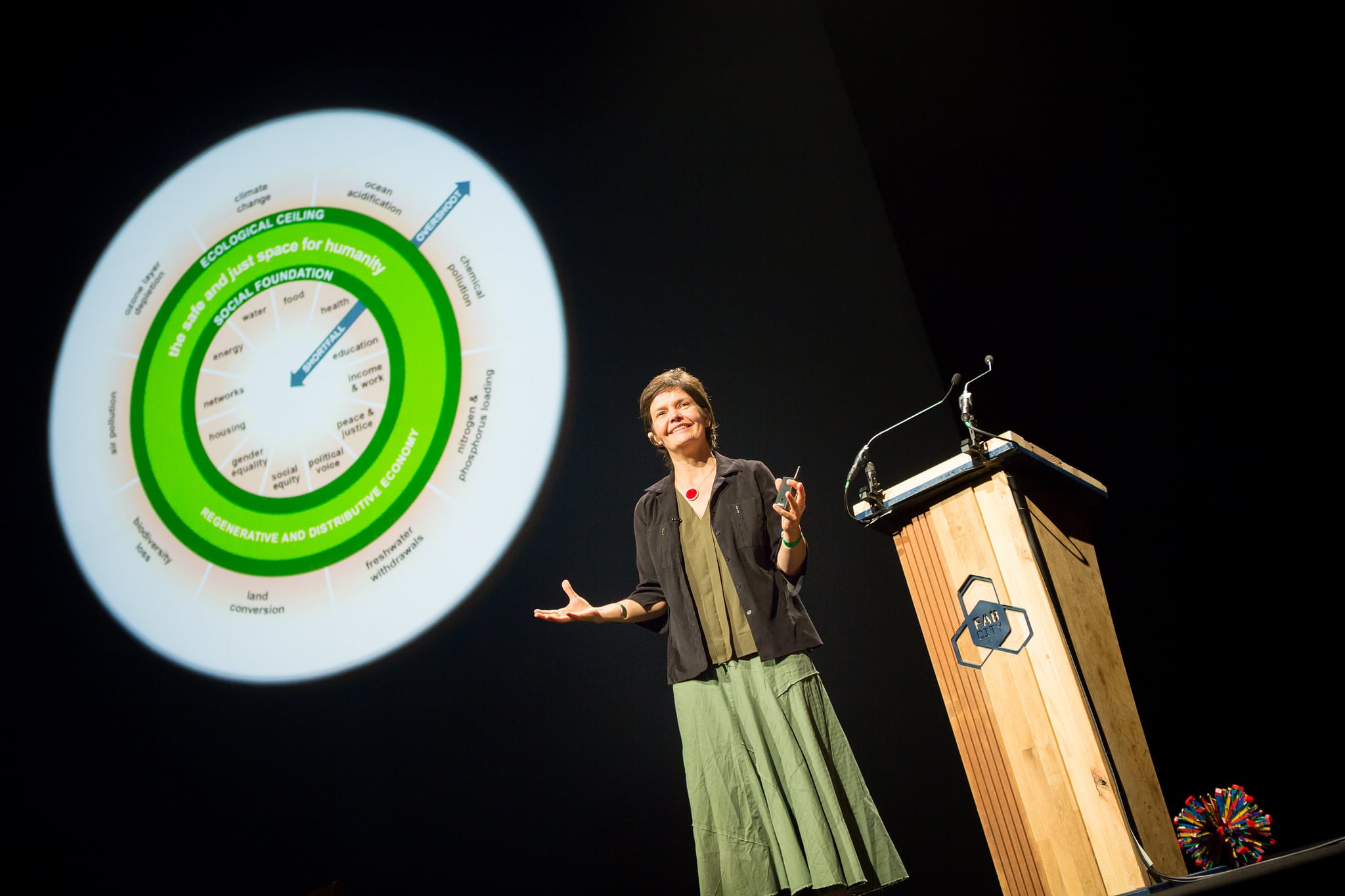
“We can all thrive on this planet”
One of my favourite things about events like this is watching the sparks fly when brilliant people meet for the first time. In a joyous demonstration of serendipity, when Kate met MIT director Neil Gershenfeld she discovered his friend had made her favourite prop, which she uses to break down economics.
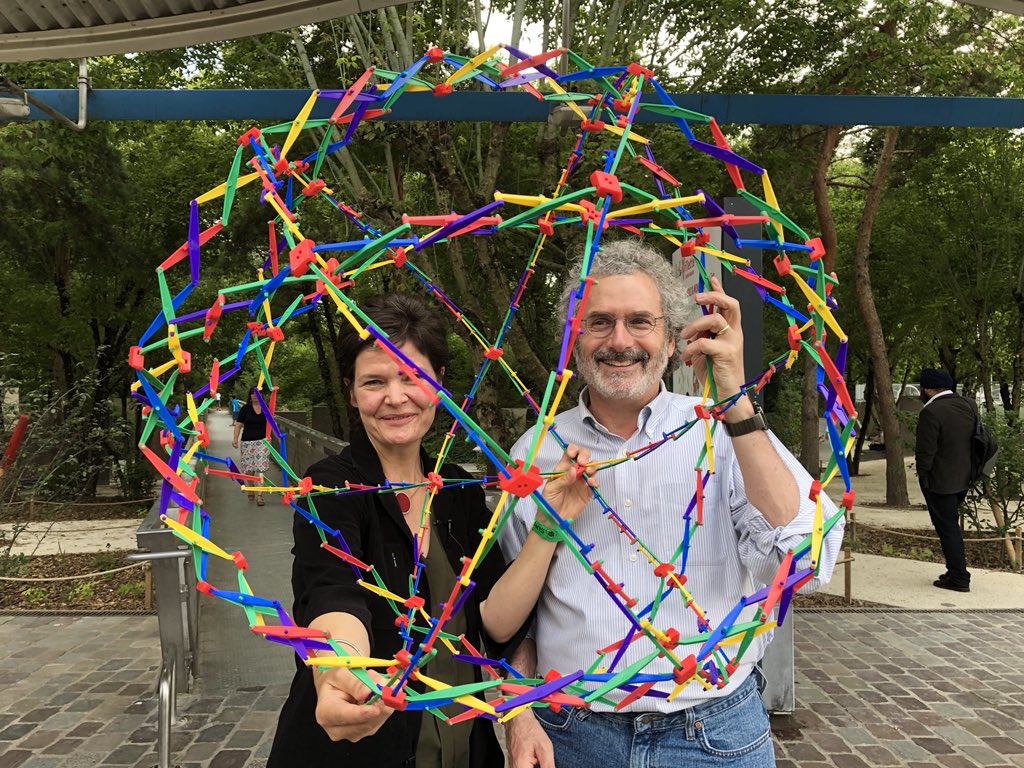
Neil Gershenfeld created the first Fab Lab
► For more Fab projects sign up to AtlasNews
“The philosophy at the heart of Fab City is that atoms that are heavy should stay and move locally because it takes energy and resources to move them around. But bits can go globally. To me that is a leap in industrial design. “ – Kate Raworth
Plus, Kate made the audience do this…
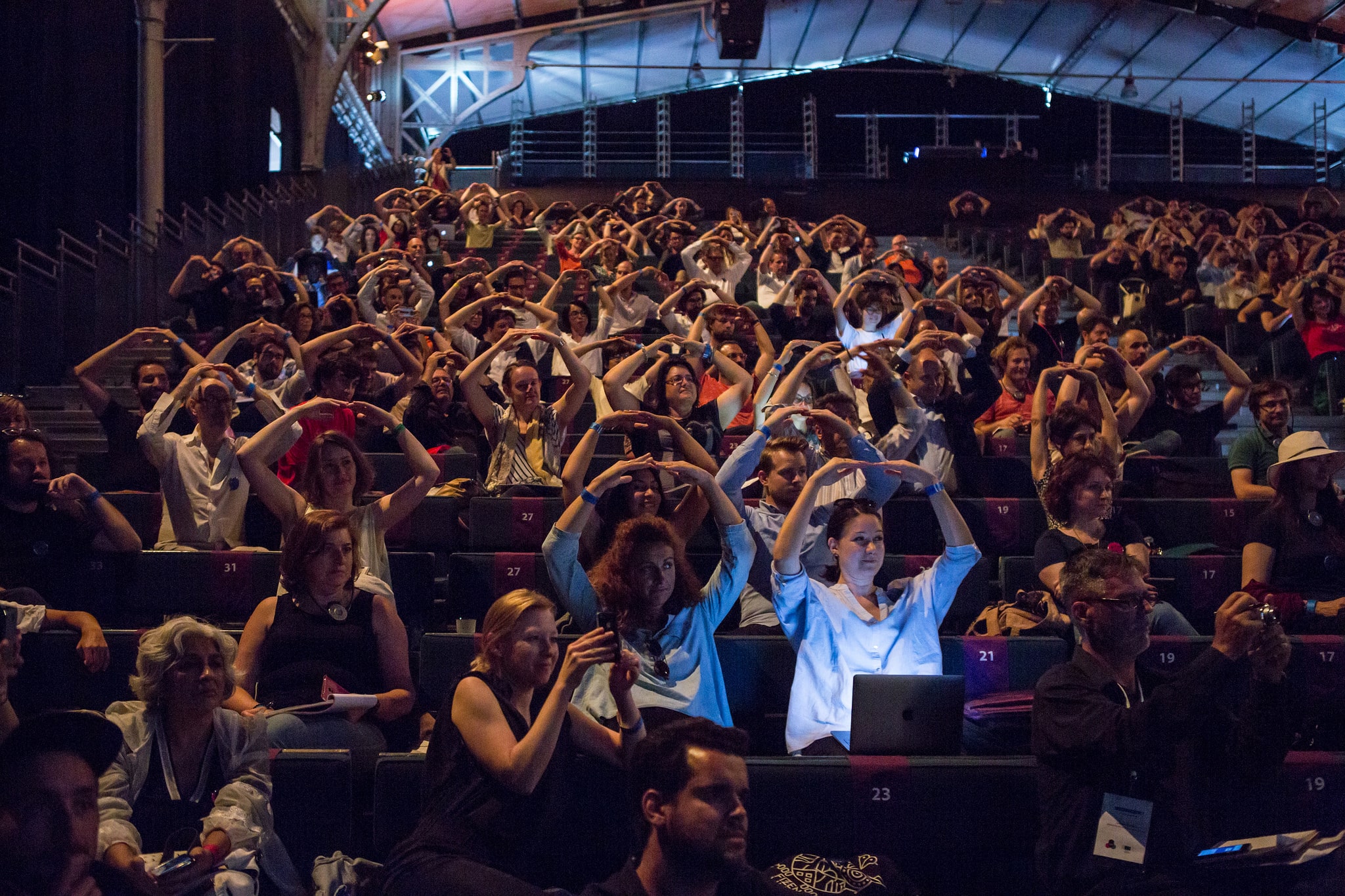
A collective selfie (and audience of doughnuts)
Factoid: In a true sense of irony that goes against Fab openness, the word ‘doughnut’ is banned in Spain as it’s been patented by Bimbo. (Yes, really.) No problem in France though.
Watch ► Kate breaks down Doughnut Economics
5. Lunch with an ethno-mathematician

You can download and make these chairs too
A personal highlight was chewing the fat (well, a sustainable lunch in recycled containers) with legendary digital colonialism and exploitation expert, Ron Eglash. Talking ‘generative justice’, fractal patterns in Africa, the first 3D printer made from e-waste and the makerspace in the most toxic place on earth is everyday water cooler fodder at events like this.
This was only topped by interviewing ten Rons in a surreal garden of mirrors within the woodland pines, while a family of reflections shot each other with water pistols. Yes, digital tools can be levers for emancipation, but so can parallel universes.

Reflecting on the math world
6. Materials matter

Breaking good: nature’s ingredients of the future
Out of the rabbit hole and back into the heart of the urban jungle, the hands-on Fab City Campus was a farming-to-fashion innovation fantasy, with robots, prototypes, people playing with Arduino boards or creating pavilions from plywood. The celebration of distributed materials is proof of how open data can empower scientists, designers and engineers.
With Materiom, co-founders Liz Corbin and Alysia Garmulewicz have created a collaborative book of open source material recipes with local materials that can be made on a stovetop and dissolved in your sink. Sounds very Breaking Bad doesn’t it?

Breaking good: Alysia and Liz have got something cooking
Kate Raworth was right at the front of the locally-produced workshop, blowing Liz’s mind by comparing the circular design expert to physicist and chemist Marie Curie, cooking up potions in her kitchen.
“We see the exponential growth of community-scale centres of production like Fab Labs, makerspaces, and hackerspaces creating the opportunity to build more local and regional supply chains that source abundant, natural materials.” – Liz Corbin

No culinary skills necessary
7. Real projects, not just hot air
Fab City is all about the people really doing it, not just talking about it. Know what this is? (Clue: not a balloon.)
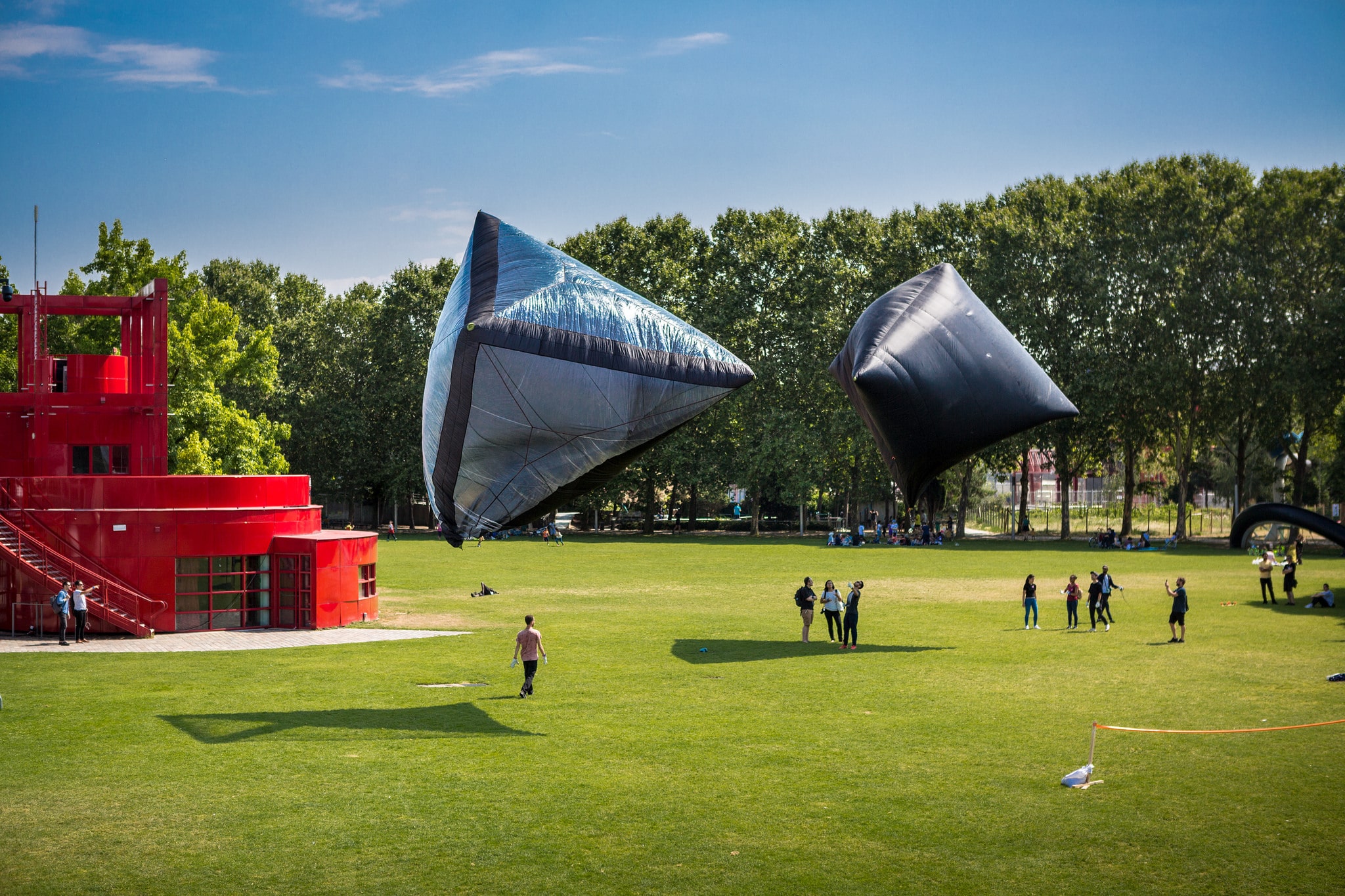
This is literally hot air
In the park, the gravity-defying Aerocene demonstrated their narrative-building scientific research translated into an art form. Both a dreamer and a visionary, Argentine artist Tomás Saraceno and his adventurers realised the very first human flight in a zero carbon solar-powered hot air balloon back in 2015 in the desert of New Mexico.

Tomás and the Aerocene Foundation
Aerocene tunes into weather data with radio kit to predict air streams that can carry their Explorer sculptures around the world without using a drop of fuel. Then they use the formations and data to create ‘aeroglyphic’ air signatures as a commitment to a fossil fuel free future. The point: the aerosolar sculptures raise awareness of air pollution.
8. Less is Moore

Insights on how to bring about systems change
The day’s talks ended with Neil Gershenfeld, the MIT professor who spurred the digital fabrication revolution, explaining how the network has chosen the year 2054 for the countdown to localised production.
“By 2054 70% of us will live in cities. The countdown is running. We have 40 years to change radically our production systems and stop global waste.”
As the global total of Fab Labs worldwide doubles every year, Neil compared the phenomenon to Moore’s Law – which predicted in 1965 that the power of computers would double every two years for 50 years. At this rate, labs could be as omnipresent as the smartphone.
“You will no longer go to a Fab Lab to use its machines, but to build other Fab Labs.”
Meta.
9. Manifestation of the Manifesto

“Within a century, cities such as Lagos, Dar es Salam or Mexico City will have a bigger population than France.” – Carlos Moreno, smart cities expert and Sorbonne professor
Don’t freak out, but there’s no better time to pay attention to the Fab City Manifesto than right now. With the City Hall giving off some seriously magnifique mise-en-scène, the summit saw the historical signing of the manifesto by the Fab Foundation and city representatives from Paris, Barcelona, Helsinki, Belo Horizonte and more – as they agreed to implement ten principles to enable the urban transition towards locally productive and globally connected cities:
“We embrace strategies in circular economy and digital social innovation, and foster collaboration between a global network of European and worldwide cities and territories to meet the planetary challenges presented by climate change and social inequalities.”
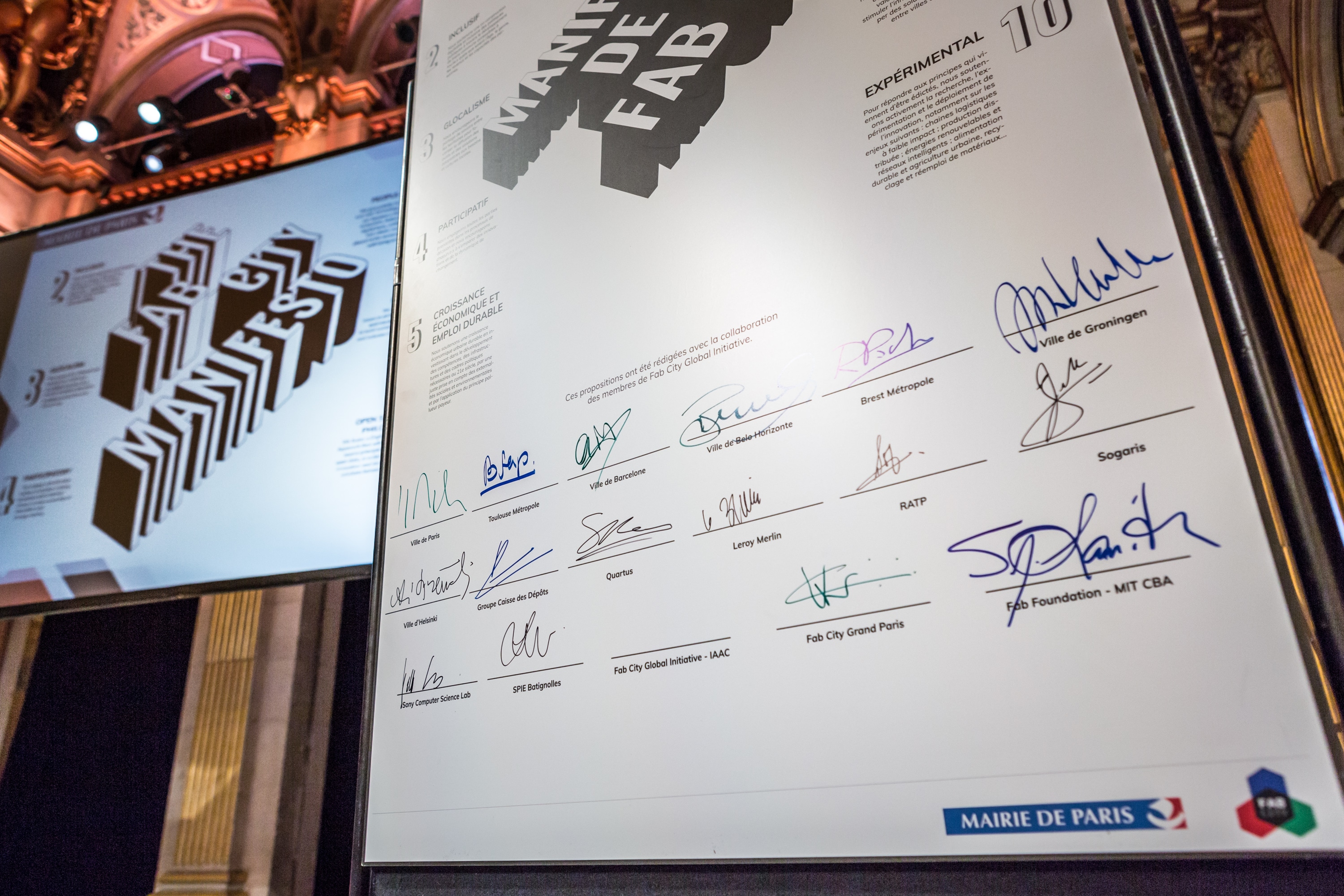
Sign and deliver ten principles
AtlasAction ► Download and share the full Fab City Manifesto
10. 28 is the magic number (and counting)

Will your city be the 29th?
From Kamakura, the Japanese seaside city just south of Tokyo to Mexico City, one of the most populated cities in whole world, to Seoul with its urban-architectural heritage, ten new cities took the pledge – and joined the network – taking it to 28. While what makes a good neighbourhood is a neighbourhood that makes, each city representative has their reasons for signing up.
Mexico City’s Monica Romo wants to apply the principles of circular economy: “We should be promoting and strategically taking advantage of resources in a world where citizen participation is more proactive. Take action, use the tools, do it yourself and share your experience.”
Sal Bednarz told us how Oakland’s creativity makes it the perfect petri dish to incubate new unexpected ideas: “We have problems right now, big ones. I see immediate opportunity for entrepreneurs, including those who have been traditionally excluded – women, people of colour and low income people.”
In the state of São Paulo, Sorocaba has been undergoing extensive urbanisation projects. Siron Pereira wants to sort out the disconnected local production ecosystem: “We have big companies that work on recycling and we want to connect them to the citizens and empower their impact.”
Meanwhile Youka Watanebe explained that Kamakura has received a great deal of stimulation from another city by the sea. “We are learning from the city of Barcelona, and the positive attitude that they project by creating the flow of new era that involves the people in the city.”
Right back atcha, Kamakura.
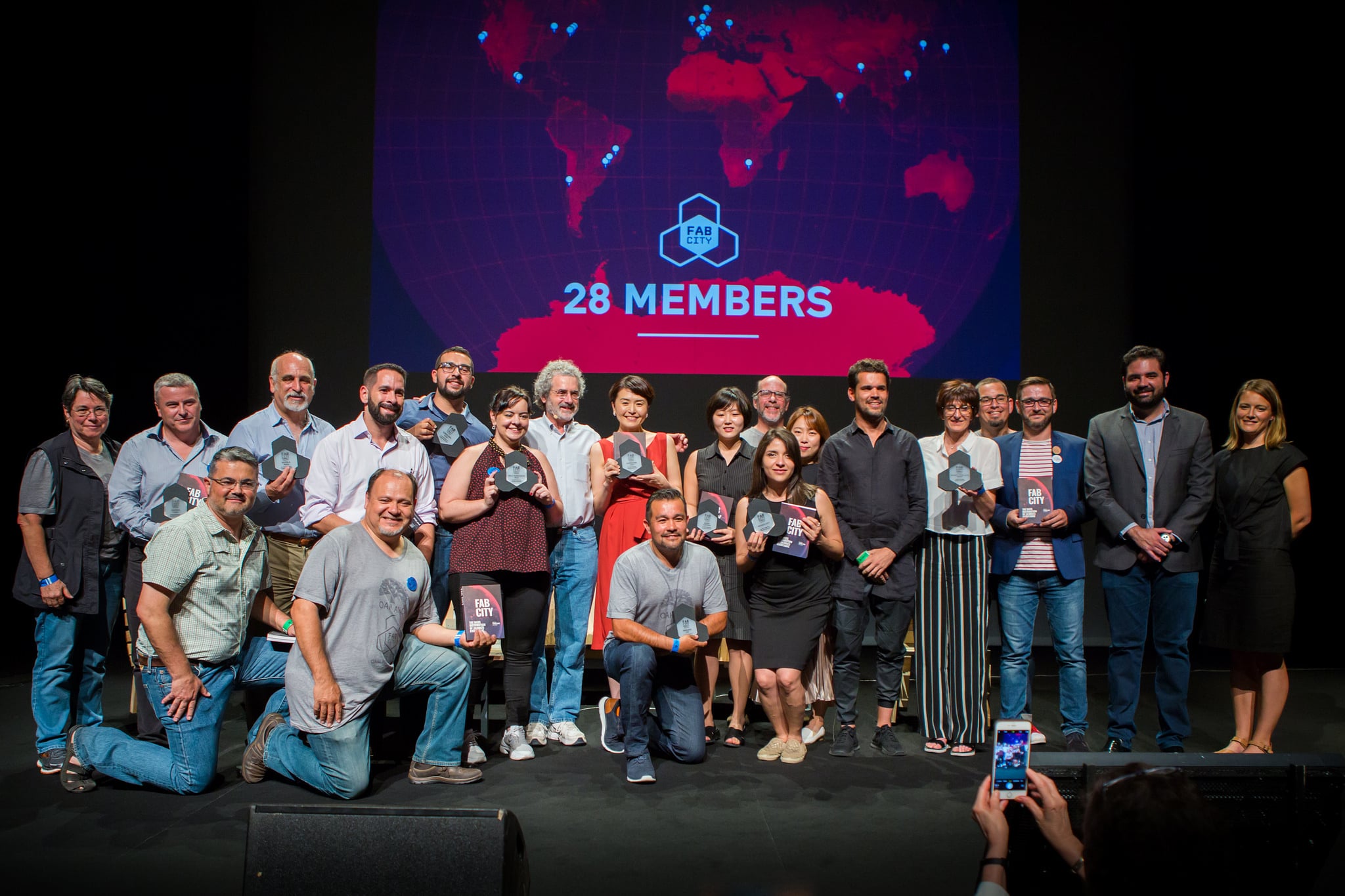
Truly global
In the challenge sessions, each contextualised their Fab City approach – along with representatives from cities that are in line to join the network as members, hopefully pledging in 2019. Tel Aviv’s Ohad Meyuhas was most excited about the session by Beirut’s Frederic Ajoub, as he wants to learn from the neighbouring country, but isn’t allowed to enter Lebanon. Just let that sink in. As Tomas put it: “that was really beautiful, we can really learn from that.”
11. Books of mass distribution
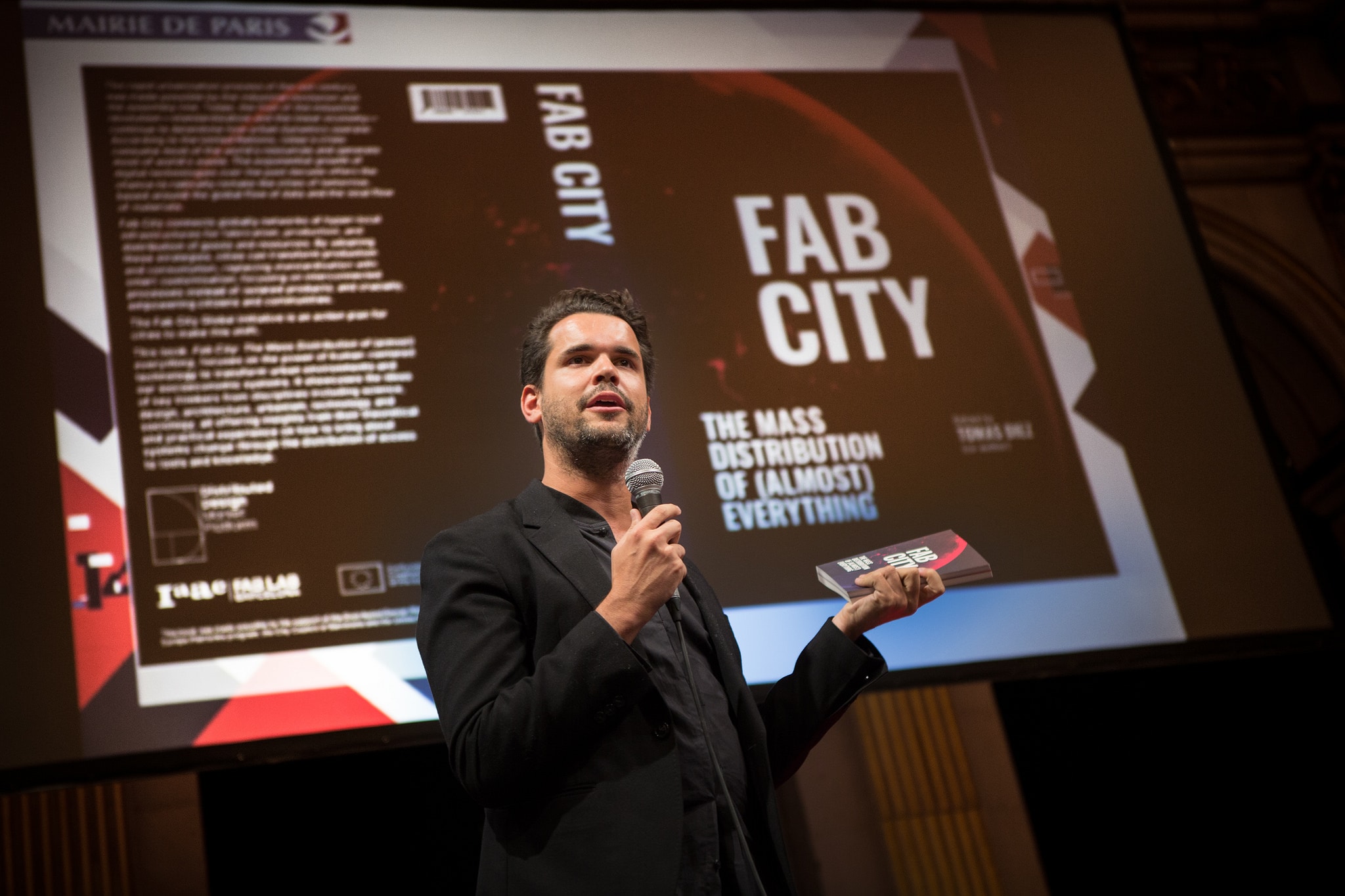
Coming soon: the digital book launch
A milestone, a manifesto, a map, a guide, and simply a manual for making engaging urban futures possible… the summit saw the launch of the Fab City book: ‘The mass distribution of almost everything’.
“In an ever-changing world, innovation is not an option, it is a necessity.” – Tomás Diez
In collaboration with the European Union, United Nations and Barcelona City Council, and edited by Tomás, the collection of Fab experiences features a call to action for people and communities to convince their governments to take part of the network, and to start making something in order to produce change. Read it online.
12. Have bits, will travel

Makers at the Distributed Design Summer School at the Fab City Campus
If you’re a creative player, maker, designer, artist, architect, scientist or, as Ron Eglash puts it, nerd – you will know that in a Fab City designs travel globally as ‘bits’ and are fabricated in ‘atoms’ locally. distributeddesign.eu is a new platform to share those bits and pieces about the market emerging from this new digital reality. It focuses on connecting makers with new markets and provides a discursive space for the development of new market opportunities.
Taking things literally to market, Paris saw the opening of the Fab City Store, showcasing original handicrafts by an international community of creatives who all use distributed design.
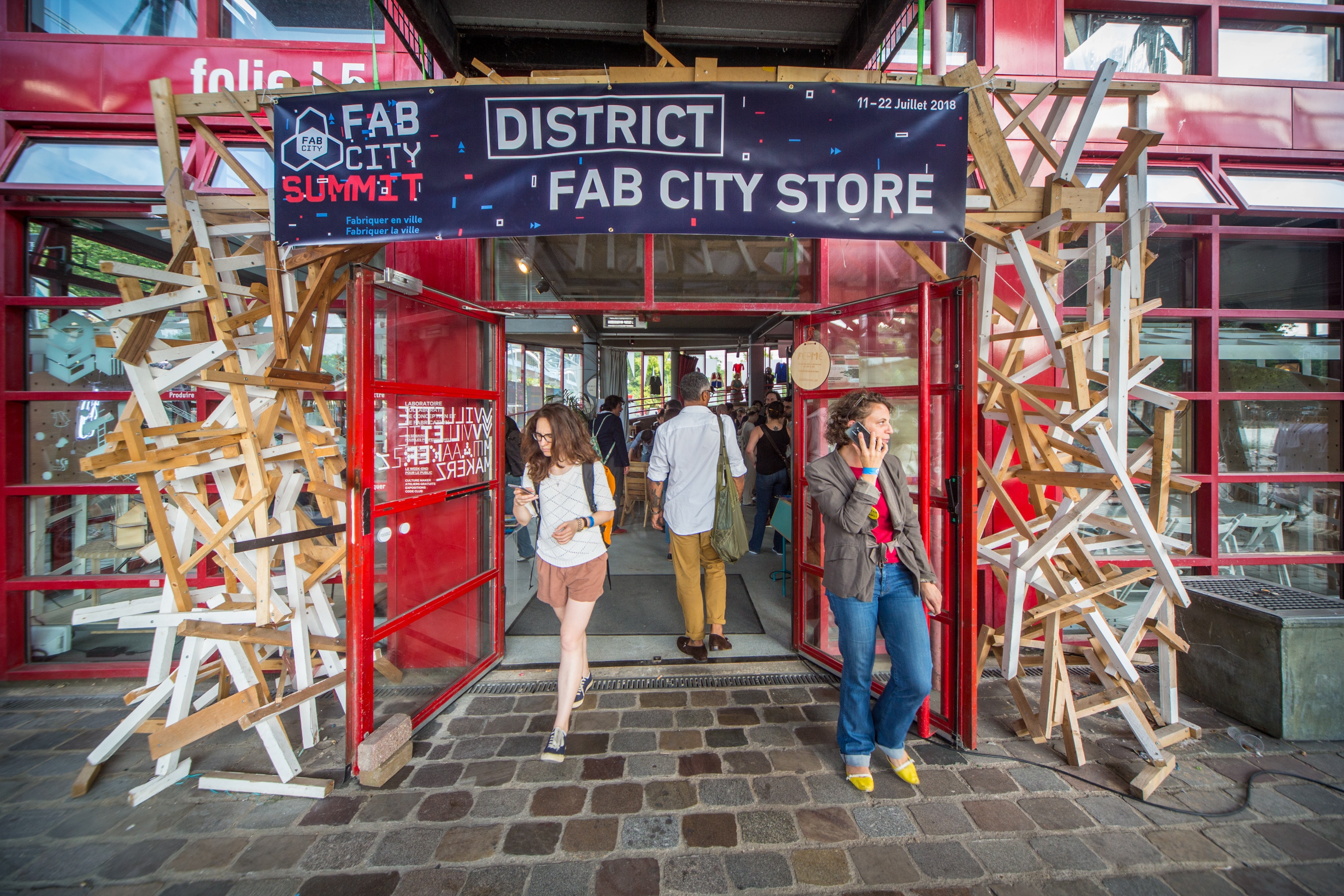
No less than 40 European designers
With everything locally produced in or near the city, the pop up included some impressive work by Fab Textiles, who use Fab new tools to cultivate materials and embed technologies into fashion.

Experimental digital open source couture
AtlasAction: Been there done that, got the T-shirt and the mug? Now you can download the book, the exhibition and the store.

Plygood: is this le futur?
13. The Fab-ric of a city

Rory Aronson and Dave Hakkens
Just as there is no one single founder of Fab City, there is also not just one community, it’s about the fabric of the city. “This is not based on individual heroism, but a global collaboration.” Here are just some of the projects that showcase what it’s all about:
Farmbot: Rory Aronson has fabricated a 100% open source farming robot with a game-like interface. Another highlight of the Summit was when he open-ly vibed off with the creator of Precious Plastic.
Precious Plastic: DIY plastic recycling machine workshops by Dutch designer Dave Hakkens. The network now includes over 200 people who have built machines – and a new one is popping up every week.
Open Source Beehives: Fancy printing your own hive in 30 minutes? OSB is a buzzy giant hive of makers, beekeepers and citizen scientists – who are discovering the reason bee populations are declining.
Materiom: This online recipe cookbook is for budding material chefs everywhere – using ingredients that can be found on your doorstep.
Provenance: Whether fish or fashion, every product has a story. This ‘fancy database’ uses tech like the blockchain to share truths about the people, places and materials.
Smart Citizen: The word ‘smart’ doesn’t always have to prefix something stupid. This is an ecosystem for people to farm data (collect, store, process and share), and be an active part of the production of information in cities.
14. After-Fab
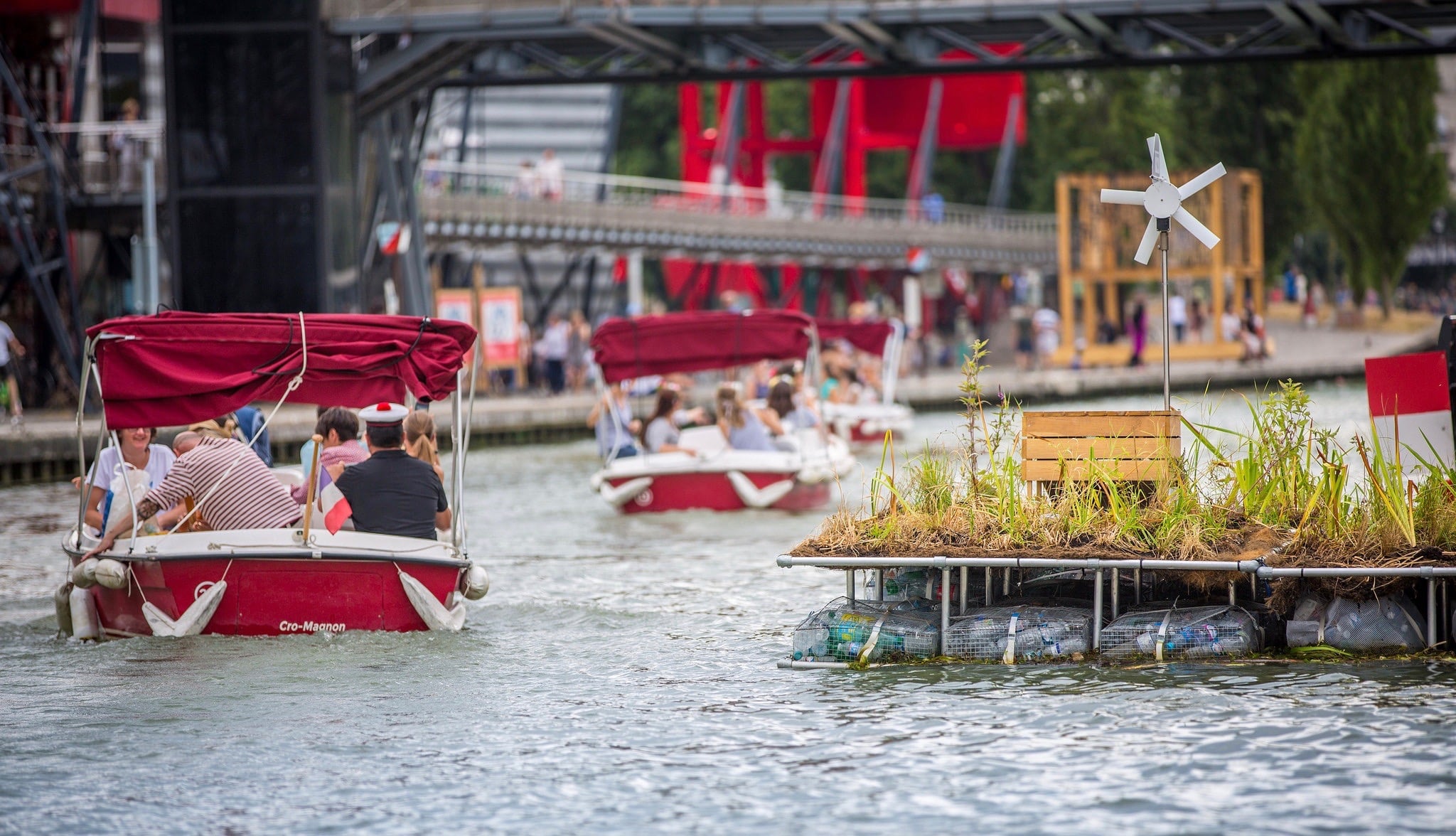
They say people on the right side of history have better parties. To change the world, you have to throw a better bash than the people destroying it. And that might just involve hopping on a boat through floating urban farms, out of the city boundaries and into La Station-Gare des Mines. For example.
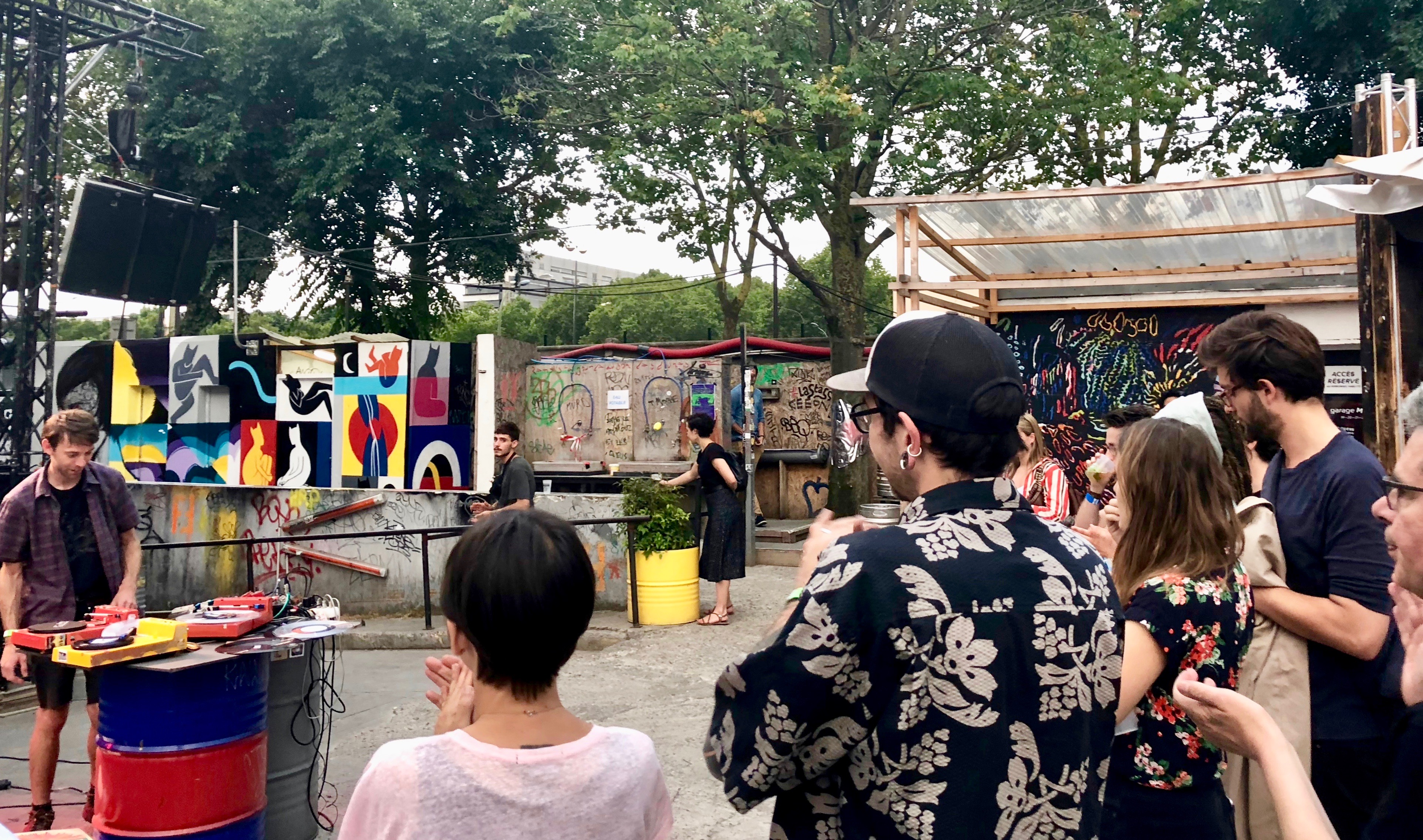
You can’t hear this
Located in between the warehouses of an industrial suburb that has very much escaped gentrification, the alternative open air after-party was in keeping with the maker movement: the glitchy sounds were homemade, the vibe, communal and punk, the crowd international and the shapes being thrown, experimental. It’s good to be part of this creative circle. Now to regenerate…
Montreal will host the next Fab City Summit in 2020. In the meantime, you can sign up to online social network Fablabs.io.
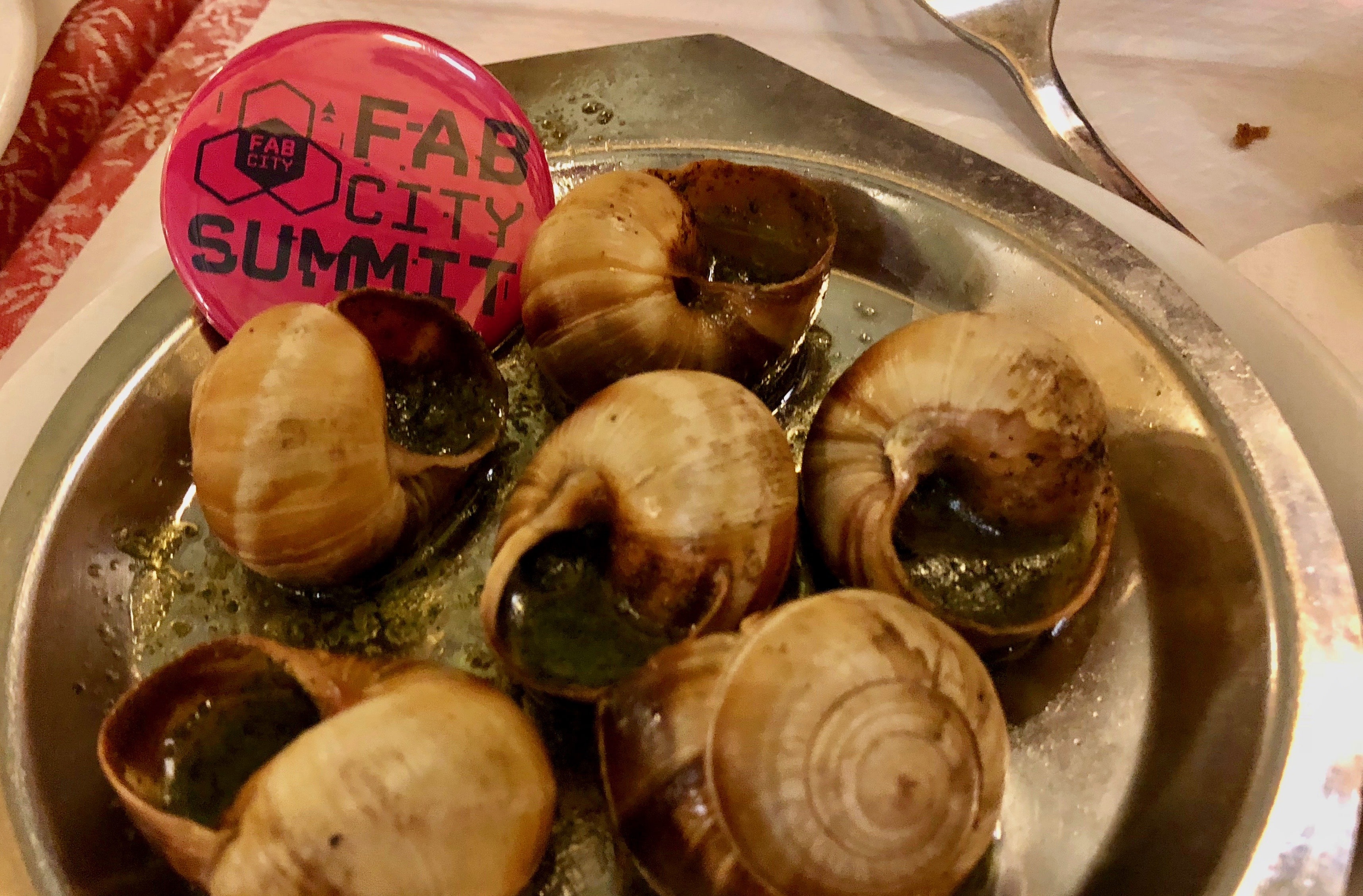
DIY photos: Atlas of the Future
Professional photos: Stefano Borghi
Enter the FutureLeague ► Fab City Global: DIY cities of tomorrow
AtlasChart ► We asked Tomás Diez for his Top 9 projects – featuring a restaurant you can download and eternal showers of the spotless mind.
